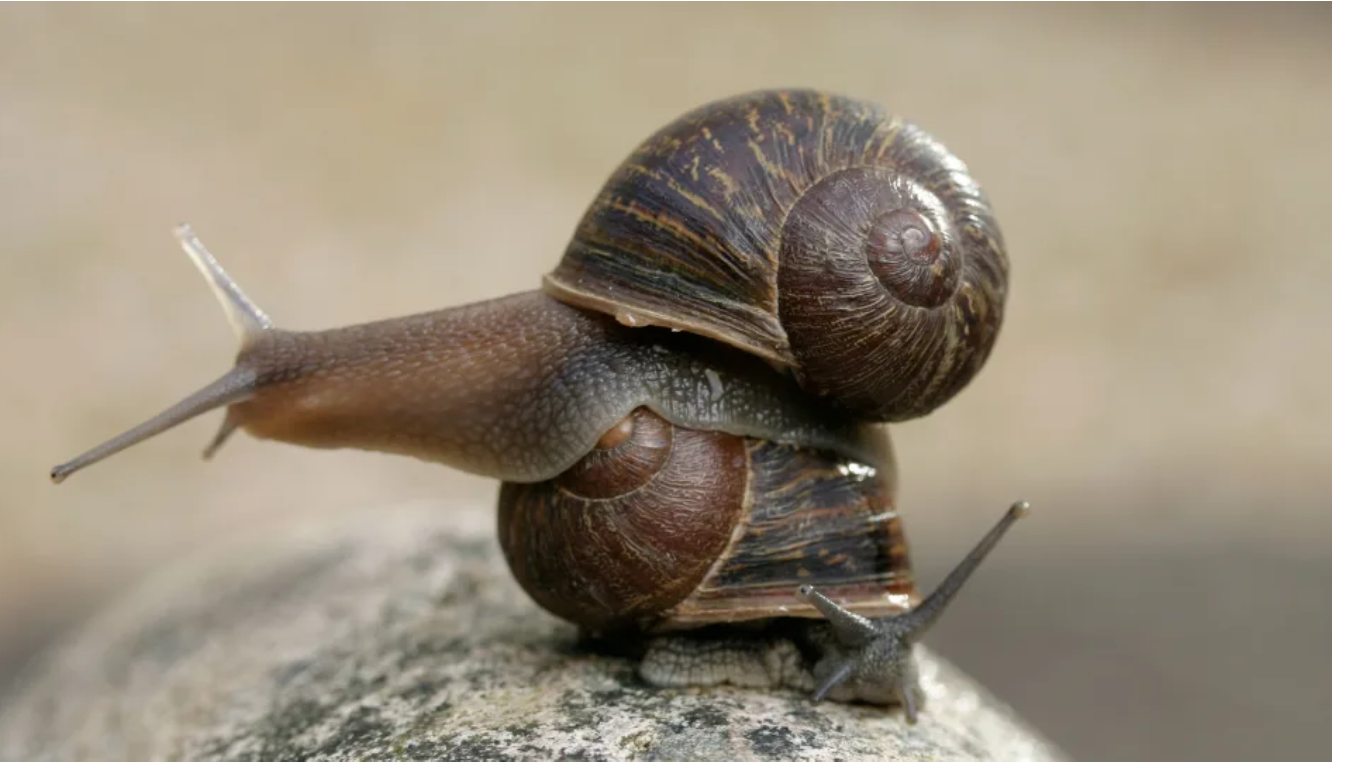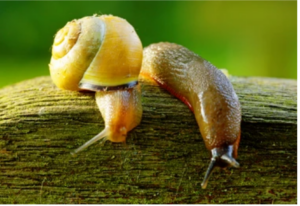Once in a while, nature has a way of surprising us with unique and rare occurrences, and that’s exactly what happened with the story of Jeremy, the left-coiled snail.
While most garden snails have shells that spiral to the right, Jeremy’s shell defied the norm and spiraled to the left, making him a rare find. The discovery sparked a wave of scientific curiosity as experts sought to understand the genetic and environmental factors that could cause such an anomaly.
Join me as we delve into the story of Jeremy, the left-coiled snail, and explore the fascinating world of snails and their shells.
The Intriguing Story of Jeremy the Left-Coiled Snail
You will not want to miss Maria Popova’s book, The Snail with the Right Heart: A True Story. In the book, Popova recounts the discovery and subsequent scientific investigation of this remarkable left-coiled snail.
- Hardcover Book
- Popova, Maria (Author)
- English (Publication Language)
- 56 Pages – 02/02/2021 (Publication Date) – Enchanted Lion (Publisher)
It’s incredible how the most fascinating stories sometimes come to us unexpectedly. I stumbled upon this fascinating tale while researching snail production for my article “How Do Snails Reproduce.”
Snails are fascinating creatures, which explains why many of us are curious about their mating habits, eyes, and life cycles.
As hermaphrodites, snails can mate with any other individual. However, there are snails like Jeremy whose lives do not follow such a straight path.
It was Jeremy’s loneliness that brought him into the spotlight. In 2016, Angus Davison took Jeremy under his care in an attempt to find him a suitable mate.
Previously, Jeremy had suffered silently, watching as his fellow snails became parents and denied him the same opportunities. Jeremy had a left-spiraling coil, unlike his counterparts, which meant he could only mate with another snail with the same deformity.
The rarity of this condition meant that Jeremy would remain alone while other snails enjoyed each other’s company and warmth.
The Genetics Behind Jeremy’s Left-Coiled Shell
We all know that genetics significantly determines individual characteristics, whether in plants, animals, or humans. And Jeremy, the garden snail with a left-coiled shell, is no exception.
Thanks to the efforts of several researchers from the Shinshu University and the Okinawa Institute of Science and Technology Graduate University in Japan, we now have a scientific explanation for his unusual shape.
Their findings, published in 2019, revealed that specific genes influenced the direction in which a snail’s shell coils away from its body.
Interestingly, a snail’s shell coiling is influenced by the handedness of its internal organs. While the heart’s position in humans may not impact their characteristics much, it’s a whole different story for snails.
For instance, if a snail’s handedness is reversed, its entire life is also reversed. This is because their genitalia are located on specific sides of their bodies, and mating is only possible if they align perfectly with their chosen mate.
Unfortunately for Jeremy, as a left-coiled snail, he couldn’t mate with right-coiled snails, making him a lonely bachelor. The scientists discovered that Jeremy is part of a group of snails with a single mutant strain associated only with garden snails.
However, they also confirmed that this mutant strain has a 50-50 chance of influencing the direction of a snail’s shell coiling. Snails with shells coiling to the right will lay eggs, promoting the hatching of left- and right-handed baby snails.
Almost all garden snails have the mutant gene, but not many are left-coiled like Jeremy. This is because the deformity depends on whether the gene is fully expressed.
Moreover, the rarity of the gene also shows during the hatching process, where eggs with a strongly expressed mutation fail to hatch, ensuring that only right-coiled snails get to continue mating with their right-coiled counterparts.
Finding a Possible Mate for Jeremy
It is common for people to feel empathy toward animals, especially when they are in need. That’s what happened with Jeremy, the Lefty snail, who needed a mate.
His unique characteristic of a left-coiled shell made finding a mate challenging. His story made international news when the BBC covered it. Fortunately, Jeremy’s story reached the right ears and generated an international cry for help.
A snail enthusiast came forward with Tomeu, a left-coiling snail from the Spanish Island of Majorca, to help Jeremy find love. Meanwhile, another snail farmer from the United Kingdom, who also had a left-handed snail named Lefty, brought him over to mate with Jeremy. However, things did not go as planned.
Scientists observed that neither of the two snails showed any interest in mating with Jeremy. Instead, Lefty and Tomeu fell in love with each other, leaving Jeremy once again alone in his search for love.
It was like a love triangle where two friends fell for each other and left the third one out. Despite the unfortunate outcome, Lefty and Tomeu became parents to 170 baby snails with right-coiling shells that differed from their parents’ shells’ direction.
Jeremy could only watch in amazement as he witnessed the miracle of birth and the continuation of life.
Although Jeremy was unlucky in finding love, his story brought attention to the importance of genetic mutation and the diversity of life in our world. It’s a reminder that even the smallest of creatures can make a significant impact.
Jeremy’s Final Moments
In a British laboratory, Jeremy spent his final moments in a refrigerator under the watchful care of dedicated scientists. These scientists were determined to give the rare left-handed snail a chance at procreation, and they succeeded!
To get Jeremy to mate with another left-handed snail, the scientists had to break up a love triangle. They removed Lefty, the rare snail from Suffolk, England, leaving only Jeremy and Tomeu together.
With no other options available, the two snails had no choice but to mate with each other. Angus Davidson, one of the scientists, witnessed Jeremy and Tomeu mating multiple times, with three episodes being particularly noteworthy.
Unfortunately, Jeremy passed away a few days after mating, never getting the chance to meet his offspring. Ironically, the scientists in the lab initially thought that Jeremy was merely sleeping, unaware that he had passed away. When Davidson checked in on his favorite scientific species, he was shocked to learn that Jeremy’s empty shell was all that remained.
The only regret expressed by the scientists was their failure to collect samples of Jeremy’s DNA. Unfortunately, snails degrade quickly after they die, making it impossible to collect DNA samples for future observations.
Despite the inability to confirm Jeremy’s DNA in his offspring, the scientists are confident that he did not die in vain. They believe that his legacy lives on through his successful procreation with Tomeu.
Frequently Asked Questions
How long are snails pregnant?
Snails are not mammals and do not carry their young internally; instead, they lay eggs that hatch into baby snails. The gestation period, or the time it takes for snail eggs to hatch, can vary depending on the species and environmental conditions. Generally, it can take a few days to several weeks (two weeks) for snail eggs to hatch.
How many babies does one snail have?
The number of babies a snail can have depends on the species. Some species of snails lay dozens of eggs at a time, while others may lay only a few. Additionally, snails are hermaphrodites and can fertilize each other’s eggs, so the number of offspring produced by a single snail can vary.
How many times do snails mate?
Snails typically mate multiple times throughout their lifetime, with each snail fertilizing the other’s eggs during mating. The frequency of mating can vary depending on the species and environmental conditions. Sometimes, snails may mate only once, while others may mate several times yearly.
How do you know when a snail is about to give birth?
As snails don’t give live birth, it’s inaccurate to say they “give birth.” Snails lay eggs, and there are no external signs that indicate when a snail is about to lay its eggs. However, snails may become more active and explore their surroundings more in preparation for laying eggs.
How do you stop snails from breeding?
To prevent snails from breeding in a fish tank, you can manually remove any visible egg clutches and reduce feeding, as excess food can contribute to snail reproduction. Additionally, avoid overfeeding or providing a diet high in calcium, which can encourage snail breeding. Introducing natural predators of snails, such as loaches, can also help to keep the snail population in check.
Sources
- BMC: Heterochirality Results from Reduction of Maternal Diaph Expression in a Terrestrial Pulmonate Snail
- Phys.org: Right- or Left-Handed? Gene Expression Tells the Story of Snail Evolution
- The Guardian: Jeremy the Lonely, Left-Coiling Snail Loses Out in Love Triangle
- CBC: Jeremy the Lefty Snail Has Died a Proud Papa


